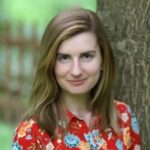 Becoming a better man isn’t about achieving perfection—it’s about progress. It’s about choosing, every single day, to strive for integrity, strength, and humility. Through my years as an elite athlete, frontline police officer, coach, mentor, leadership instructor, and author, I’ve learned that the journey to becoming a better man is forged through discipline, service, and resilience. Continue reading
Becoming a better man isn’t about achieving perfection—it’s about progress. It’s about choosing, every single day, to strive for integrity, strength, and humility. Through my years as an elite athlete, frontline police officer, coach, mentor, leadership instructor, and author, I’ve learned that the journey to becoming a better man is forged through discipline, service, and resilience. Continue reading
Category Archives: Decisions@Risk™
#463 – ROBOTS AND AI ARE WORKING TOGETHER TO BRING YOU BETTER MEDICINES, SHAMPOO, AND MORE – PETER BEAUCAGE
Featured
 Every time you squeeze toothpaste onto your toothbrush, spray perfume on your skin, or swallow a pill, you’re using the result of a carefully crafted recipe made in a lab. These are called formulations.
Every time you squeeze toothpaste onto your toothbrush, spray perfume on your skin, or swallow a pill, you’re using the result of a carefully crafted recipe made in a lab. These are called formulations.
Formulations aren’t just simple mixtures — they’re complex arrangements of ingredients designed to work together in specific ways.
Getting the recipe right can mean the difference between a product that sits on the shelf (or never makes it to the shelf) and one that changes lives.
Here at NIST, we’re revolutionizing how scientists create and improve formulations. We hope the result will be better products you use every day.
The process combines robotics, artificial intelligence and analysis of advanced materials. For example, we can use neutrons or X-rays to take pictures of how molecules millions of times smaller than a human hair are arranged in materials.
It’s not just about making better products. It’s about making them in ways that are faster and more efficient while leaving a lighter footprint on health and the environment. This happens in our Autonomous Formulation Laboratory (AFL) at NIST’s campus in Gaithersburg, Maryland.
 How Your Products Are Made Now
How Your Products Are Made Now
Let’s say you own a shampoo company, and a key ingredient in your shampoo is no longer available due to supply chain issues.
You now have to remake your formulation to put in a replacement ingredient. But what ingredient? How much of it? What if that new ingredient has an unintended consequence that affects other parts of the recipe?
This is the challenge of product formulation today. Reformulating a consumer product can take months of research and a lot of money. It often requires trial and error or expert know-how. While that knowledge is valuable, experts may have difficulty adapting to new or changing ingredients.
But as a scientific community, we can do better. NIST has experts who use tools to examine the structure of materials and measure them at the smallest scales. But the sheer number of samples would make this challenging to do in a traditional formulation lab.
Enter AI.
An Intelligent, Interactive Loop
Here’s how this process works:
Step 1: Precision Mixing
Much like cooking, we start by gathering the ingredients. Instead of putting them in an oven, we put them into small vials about the size of a film canister and tell a computer about what they are. The computer then controls a robotic system equipped with a pipette. This computer precisely measures and mixes tiny amounts of chemicals from different vials. The amount of mixture is minuscule — about 30 microliters, less than a dot of ink from a fine-tip pen.
Step 2: Advanced Structural Analysis
Once the sample is prepared, we analyze it at a very detailed level, using equipment that works like an advanced microscope. We call these advanced scattering techniques.
These techniques allow us to observe how different chemicals organize themselves into larger structures within the formulation. We can then make predictions about how products will behave once our “recipe” is made.
These scattering techniques usually happen at a neutron source, such as the NIST Center for Neutron Research on our Gaithersburg campus. They also sometimes happen at a machine about a half-mile long that makes incredibly bright X-rays, known as a synchrotron.
Step 3: AI-Driven Optimization and Learning
Here’s where the magic happens. During the formulation measurement process, we collect a wealth of data and feed it into an artificial intelligence system. The AI analyzes the information, learns about it and predicts which formulation structure will work best given the manufacturer’s goals. It then instructs the robotic system to create this new formulation based on what it’s learned from past tasks.
But it doesn’t stop there. The robot analyzes the new formulation and feeds the results back into the AI. With each iteration, the AI learns, refines its understanding and makes increasingly sophisticated predictions. It’s as if the system is thinking, learning and evolving its approach in real time.
This creates a loop of experimentation and improvement, dramatically accelerating the development process for medicines and other consumer products. What might have taken months or years of trial and error can now be accomplished in hours or days.
Of course, AI is not perfect, and you can’t trust it without extensive product testing. The companies involved in this process still test their products. AI helps them develop their “recipes” much more quickly and easily than they could before.
Real-World Impact
In a recent collaboration with a pharmaceutical company, the AFL tackled a complex formulation issue in just hours — a process that might have taken months using traditional methods.
By focusing on the structural arrangement of the formulation’s components and learning from each try, the team could quickly identify and resolve issues affecting the drug’s performance.
But the AFL’s impact extends beyond pharmaceuticals.
We’re helping manufacturers improve a wide range of products by optimizing their structural compositions. This applies to everything from shampoos and paints to automotive fluids and cleaning detergents.
The AFL can handle pretty much any liquid formulation right now. We’re exploring ways to adapt it to analyze structured solids in the future.
Making a Difference With Industrial Science
Like a lot of people who do this type of work, I love an interesting problem.
When I first came to NIST as a postdoctoral researcher, I was pretty naive. I’d worked in the specialty chemical industry for a time, but I thought that most industrial problems were closer to engineering than deep science.
But I started working on this project that involves pulling the salt out of seawater. This is how drinking water is made in many parts of the Middle East and South Africa. It’s being used at a massive scale, and no one really understands why it works.
It was so eye-opening to see this incredible process responsible for keeping millions of people alive, and there are still fundamental questions about why it works. These questions hold us back from engineering something better.
Through that work, I got involved with a consortium of companies that works with NIST, called nSoft. I quickly learned that this sort of problem was fairly typical.
Wherever I looked in the members’ science — from removable adhesive strips for hanging pictures on the wall to soap bubbles — there were deep, foundational questions about the universe involved. Teams of some of the brightest people I’ve ever met are looking at these questions and trying to understand. I was converted.
Just before the pandemic, my colleague Tyler Martin started a project that involved buying and building robots for automatic solution mixing. Tyler invited me to look at the hardware and help with a few small issues. When the devices arrived, I kept slipping out to the lab to work on the software for them and tinker with how they moved solutions around. I wanted to understand and exploit the capabilities to get real results. Eventually, this “hobby” became my main scientific focus.
This project has been so fulfilling to me. We’re getting great results and really solving meaningful problems with the companies we work with. What started as a small team of two has grown into a network of students, postdocs, scientific collaborators and other facility scientists who span the globe.
When you get to come to work and build and troubleshoot robots to tackle fundamental questions about the universe that impact billions of people, you have a pretty great job. I’m especially lucky to work with the fantastic team we’ve built; there’s literally nothing I would rather be doing. I’m living my 10-year-old self’s dream life — building robots and changing the world.
Looking Ahead
While this approach has tremendous promise, we need to scale it up so that more companies can use it in their product formulation processes.
We’re publishing our methodology for anyone who wants to recreate it. We’re also working with the companies in the nSoft consortium and providing them with hands-on support in recreating this in other facilities like ours around the country.
As this technology continues to evolve, we can look forward to more effective and innovative products across a wide range of industries — all thanks to a system that never stops learning and improving.
#462 – AI IS RESHAPING THE POWER GRID – ANURAG SRIVASTAVA PH.D.
Featured
 Across the U.S. and worldwide, energy demand is soaring as data centers work to support the wide and growing use of artificial intelligence. These large facilities are filled with powerful computers, called servers, that run complex algorithms to help AI systems learn from vast amounts of data. Continue reading
Across the U.S. and worldwide, energy demand is soaring as data centers work to support the wide and growing use of artificial intelligence. These large facilities are filled with powerful computers, called servers, that run complex algorithms to help AI systems learn from vast amounts of data. Continue reading
#462 – FLYING GREEN ON A BUDGET AIRLINE – JON BIEMER
Featured
 My first travel experience with Frontier Airlines gave me more than a cheap fare. I received a surprising environmental education.
My first travel experience with Frontier Airlines gave me more than a cheap fare. I received a surprising environmental education.
Departure
Having no experience with budget airlines, I decided to give Frontier a try after attending a funeral. Its fare was less than half that of competing airlines. But it took a while to get on board so to say. Continue reading
#460 – SCARING YOURSELF IN A SCARY WORLD – SARAH KOLLAT
Featured
 Fall for me as a teenager meant football games, homecoming dresses – and haunted houses. My friends organized group trips to the local fairground, where barn sheds were turned into halls of horror, and masked men nipped at our ankles with (chainless) chain saws as we waited in line, anticipating deeper frights to come once we were inside. Continue reading
Fall for me as a teenager meant football games, homecoming dresses – and haunted houses. My friends organized group trips to the local fairground, where barn sheds were turned into halls of horror, and masked men nipped at our ankles with (chainless) chain saws as we waited in line, anticipating deeper frights to come once we were inside. Continue reading


